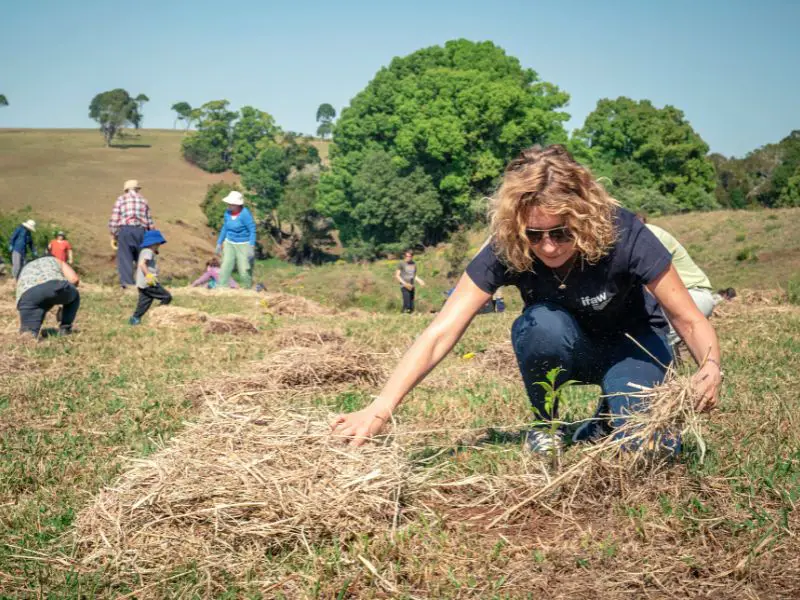Social tourism can be defined as where travelers visit places to immerse themselves in culture, history, architecture, etc. They travel to these areas to interact with and learn more about that region’s people and traditions. It is an interaction between travelers and local people. Today, we’ll look over how social tourism is revolutionizing the future of travel.
What Is Social Tourism?
Social tourism has been around for a while, but the trend has just lately begun to take hold – at least locally.
Social tourism is a kind of tourism that takes visitors to local communities with the purpose of not only experiencing the moment but also helping the areas they visit.
This help can take the shape of volunteering, such as planting with locals or house-building; skill sharing through learning sessions between communities and their visitors; donations, via whatever the tourists bring; and income generation, as many social tourism organizations allot a portion of their tour fees to their partner community.

What Are the Goals of Social Tourism?
Social tourism is growing in popularity around the world. It aims to create positive change and development in developing countries through sustainable and responsible tourism. Here are some primary goals of social tourism:
- Supporting local communities: Creating jobs, family incomes, and new infrastructure for locals.
- Improving environmental and wildlife conservation: Social tourism fosters partnerships with local environmental and social conservation organizations, using its funds and support.
- Improving cultural relations: Social tourism advocates for peace between different cultures and nations, promoting understanding and cooperation between locals and travelers.
- Gain more knowledge about new cultures: Social tourism provides the opportunity to learn about different cultures and traditions, opening the traveler’s mind.
- Build better relationships: We hope that social tourism helps travelers improve their interpersonal skills through interactions with locals and each other.
- Think of social tourism as the best of both worlds – the adventures and excitement of traveling the world with the peace and solidarity of giving back to those in need.

Ways to Support Social Tourism
There are multiple ways to promote and support social tourism:
- Support charities and nonprofit organizations: Through social architecture organizations and charities and nonprofit organizations. These can be small local charities or big international ones.
- Volunteer in local communities: This is one of the most popular ways for travelers to give back to the communities they visit. From teaching English to building houses, there are opportunities for anyone to volunteer.
- Give donations: You can also donate money to organizations that support social tourism. By giving financially to these organizations, not only do you encourage their initiatives, but also you inspire many others to do the same.
- Avoid popular or overcrowded tourist places: The less popular the tourist sites are, the less crowded they are, and the more money goes to the locals in those areas.
- Using local transportation instead of taxis, cabs, or private buses will ensure that more money goes to the locals as well.
- Speak with representatives from your local government: Since the government pays for social travel activities, you can talk to the local representatives to find the best ways to support social tourism in your area.
- There is phenomenal change on the horizon for tourism and its sustainability worldwide – especially in developing countries. There’s no doubt that social tourism will become mainstream soon, so keep an eye out and support causes you believe in.
Supporting social tourism can be done without special effort on your part. Even modest adjustments to your usual travel routine might make a difference, such as staying with a host family rather than a hotel, purchasing gifts from local artists, dining at small local eateries, recycling while traveling, and more.

Sustainability and Social Tourism
For many indigenous communities, forming sustainable relationships with social tourism organizations improves their day-to-day life – from talent sharing to money generating.
“Voluntourism,” “responsible tourism,” and “transformative travel” are all labels given to the activity as it rises in popularity. But the core concept stays the same. The goal of social tourism is to make travel more meaningful.
Examples of Social Tourism Initiatives
International Social Tourism Organisation (ISTO)
The International Social Tourism Organization (ISTO) was founded in 1963 and is one of the biggest (and oldest) social tourism nonprofits. It encourages responsible, accessible tourism for everyone, which benefits people and communities worldwide.
The organization’s key improvement objectives are as follows:
- Accessibility
- Fair business
- Environment
- Solidarity
- Quality of life
ISTO’s mission is to make leisure, vacation, and tourism accessible to everyone, including kids, elders, individuals with disabilities, and others. It collaborates with local companies and governments to offer opportunities for everyone to experience unrestricted tourism while supporting and benefitting local inhabitants, native heritage, and the environment.
Responsible Travel
Responsible travel is a nonprofit organization dedicated to environmental protection and community empowerment. It emphasizes ethical travel, lowering carbon emissions, creating accessible travel possibilities, and arranging volunteer activities that enable you to reach out a helping hand to the places you visit.

Good Travel
Good travel encourages travel that has a beneficial social, economic, and environmental effect. To that aim, the group works with local companies that give back to their communities, collaborates with international nonprofit organizations, and offers to many worldwide charities.
Lough Ree Access For All
Through its wheelchair-accessible boat cruises, Lough Ree Access For All gives people who use wheelchairs the opportunity to enjoy life on the water, which many of us may take for granted. This illustrates how social tourism may function as an approach to social tourism.
Author Notes
Social Tourism is more than just your run-of-the-mill travel. The word “social” may describe tourists who stay in homestays or visit small towns and villages to taste the local lifestyle. But social travel is much more than that. Social travel can, for people willing to consider it, change their lives and the lives of others.
Social tourism provides travelers with authentic local experiences while helping the communities they visit to improve their lives. Whether through volunteering, donations, or providing jobs, social tourism creates positive impacts worldwide. Do you participate in social tourism? Is this something you should explore when traveling? Why (or why not)? Let us know in the comments below!
You can find eco-friendly guides here: Sustainable Backpacks, Gifts for Vegans, Affordable and Sustainable Clothing Brands

